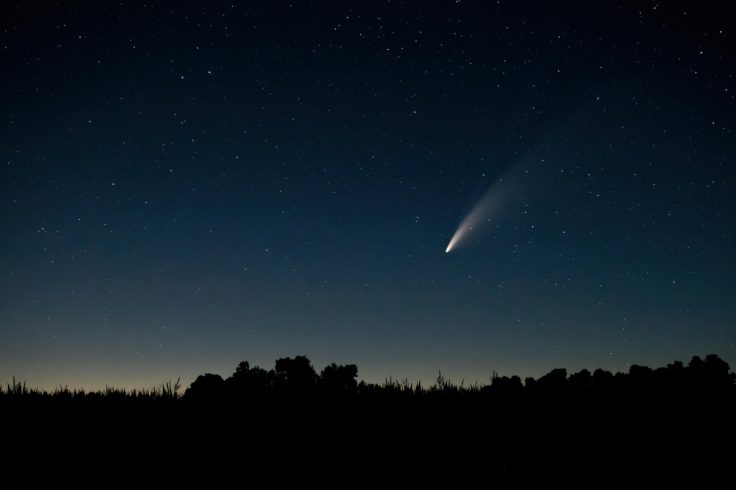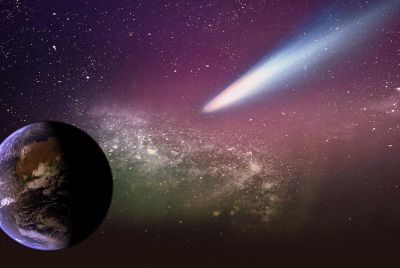'Intelligently Controlled': 3I/ATLAS Accelerates Away From The Sun And Unexpectedly Brightened
3I/ATLAS' true nature — natural or 'intelligently controlled' — remains hidden

For years, astronomers have observed countless cosmic objects, yet few possess the strange behaviour of comet 3I/ATLAS. Recently dubbed 'Intelligently Controlled' due to its bizarre movement, this interstellar visitor is now accelerating away from the Sun and, in a surprising turn, has become unexpectedly brighter.
The unusual characteristics of this object have captivated researchers and fuelled intense speculation about its nature and origin.
The Third Interstellar Visitor
Just as it reached its nearest point to the Sun, the interstellar visitor, Comet 3I/ATLAS, surprised scientists yet again by dramatically and unexpectedly increasing its luminosity. Researchers currently investigating the body do not yet have an explanation for this development.
3I/ATLAS is just the third such object confirmed to have visited from beyond our planetary system. Its predecessors were the elongated space rock 'Oumuamua, first seen here in October 2017, and the initial interstellar comet, 2I/Borisov, which appeared in our cosmic neighbourhood in August 2019.
An Expected Brightening, But Not Like This
Since they only spend a short time here, these bodies give scientists a rare chance to study the chemical composition of material from different star systems. When 3I/ATLAS reached its closest point to the Sun — or perihelion — on 29 October, scientists naturally anticipated a surge in its brightness.
This kind of activity is standard for objects like comets that typically hail from the Oort Cloud, the icy shell at the very edge of our solar system. The occurrence stems from solar radiation, which causes the solid ice to instantly turn into gas — a process scientists refer to as sublimation.
As this happens, the gas bursts out from the comet's core, releasing solid dust and forming both the surrounding glow — known as the coma—and its distinct tail. It is the light reflecting off this dust that usually increases the comet's overall visibility. Yet, 3I/ATLAS became brighter far quicker than anyone expected.
Natural Rarity or Intelligent Control?
Qicheng Zhang (from the Lowell Observatory, Arizona) and Karl Battams (an astrophysicist at the NRL in Washington, DC) acknowledged the mystery in their paper, which was shared on the arXiv repository. They wrote: 'The reason for 3I's rapid brightening, which far exceeds the brightening rate of most Oort cloud comets at similar r [radial distance], remains unclear'.
Referencing 3I/ATLAS's surprising jump in luminosity, an X post by the user All Day Astronomy, outlines a series of improbable yet natural possibilities. The argument is that these extremely low-probability events must all coincide; otherwise, the object's behaviour must be explained by a non-natural, intelligently designed, and controlled origin.
🚨: So..... it happened!
— All day Astronomy (@forallcurious) November 2, 2025
3I/Atlas did accelerate non-naturally at perihelion to navigate away from the sun. It also unexpectedly increased in brightness.
There are potentially natural, albeit far-fetched, reasons this could happen on its own, but add those low probabilities to… pic.twitter.com/76bYs2J6io
The X post argues that the non-natural origin satisfies both criteria of Occam's Razor, the principle that the most straightforward answer is usually correct. It suggests that since every other possibility has been exhausted, the remaining conclusion — no matter how unlikely — must be the true one.
The View from Space
Several key space assets tracked the unexpected, rapid change in 3I/ATLAS's luminosity, the Solar Terrestrial Relations Observatory (STEREO) twin spacecraft, STEREO-A and STEREO-B, the Sun-monitoring Solar and Heliospheric Observatory (SOHO), and even the GOES-19 weather satellite.
Space-based monitoring was essential because instruments on Earth cannot currently track the interstellar visitor. The comet is hidden by solar glare until mid-to-late November 2025, when it finally moves into its 'post-perihelion' phase on the far side of the Sun.
Potential Explanations and Chemical Clues
The research team has proposed several explanations for the interstellar comet's unexpectedly rapid increase in brightness. The phenomenon might be linked either to the unusual speed at which 3I/ATLAS is closing in on the Sun, or it may reveal a key detail about the comet's internal characteristics.
This is exciting, a differing internal composition in 3I/ATLAS compared to Oort Cloud comet nuclei would suggest the planetary system it came from possesses a distinct chemical signature.
An Uncertain Future
Zhan and Battams went on to suggest that the rapid brightening could also stem from unusual properties within the comet's nucleus, such as its composition, shape, or internal structure, which it might have gained either in its home system or during its long voyage between stars.
Qicheng Zhang has just captured the interstellar comet 3I/ATLAS!
— 3I/ATLAS TV (@3iatlas_tv) November 3, 2025
Now #3IATLAS is visible in the morning twilight - even with small telescopes, even under less-than-perfect conditions!
This image was taken on Nov 02, 2025, in the morning through thin clouds using a 152-mm… pic.twitter.com/lCLj73mukB
'Without an established physical explanation, the outlook for 3I's postperihelion behaviour remains uncertain, and a plateau in brightness — or even a brief continuation of its preperihelion brightening — appears as plausible as rapid fading past perihelion', they said.
The authors further suggested a different kind of sublimation may be happening with 3I/ATLAS. The interstellar visitor was likely still dominated by carbon dioxide turning into gas at a surprisingly short distance from the Sun — roughly three times the separation between Earth and our star.
This process may have generated a cooling effect, which had previously prevented the water ice from turning into steam. 3I/ATLAS remains equally baffling and fascinating to the scientific community. It seems highly likely that once this interstellar visitor emerges from the Sun's glare, we will uncover even more of its unusual secrets.
The pair of scientists concluded that ongoing monitoring will likely be necessary to establish a more definitive cause for the comet's unusual behaviour.
© Copyright IBTimes 2025. All rights reserved.






















